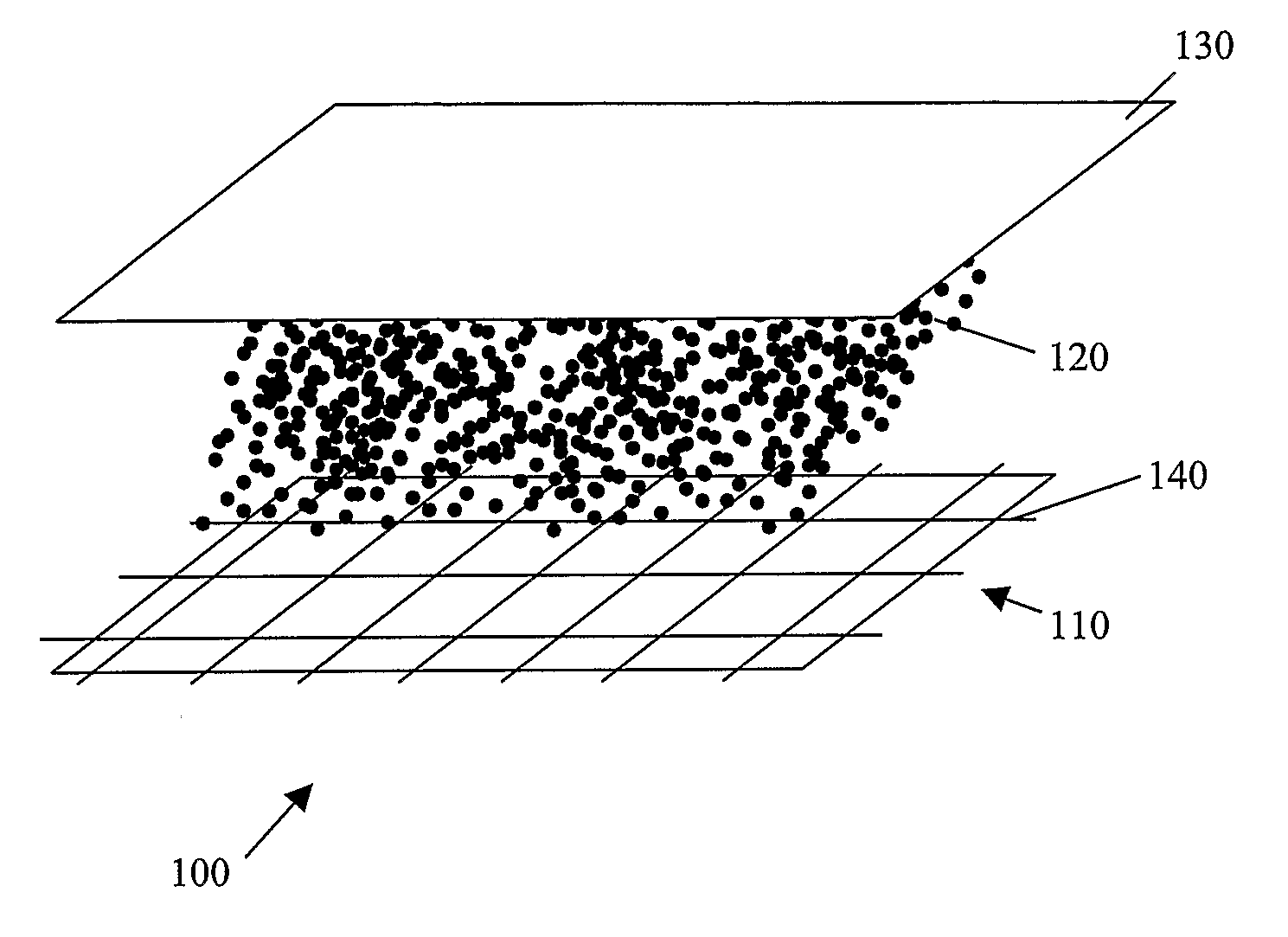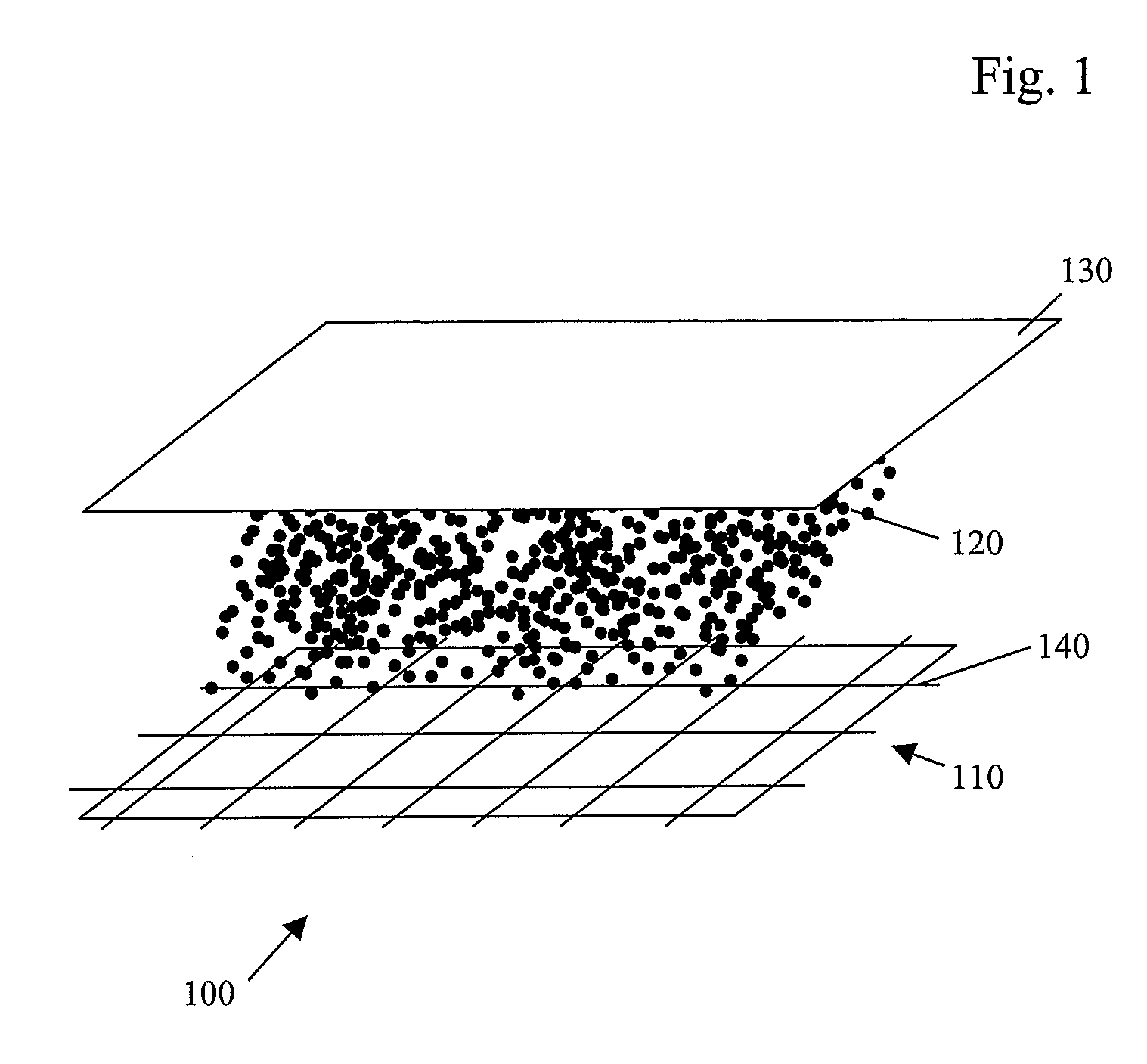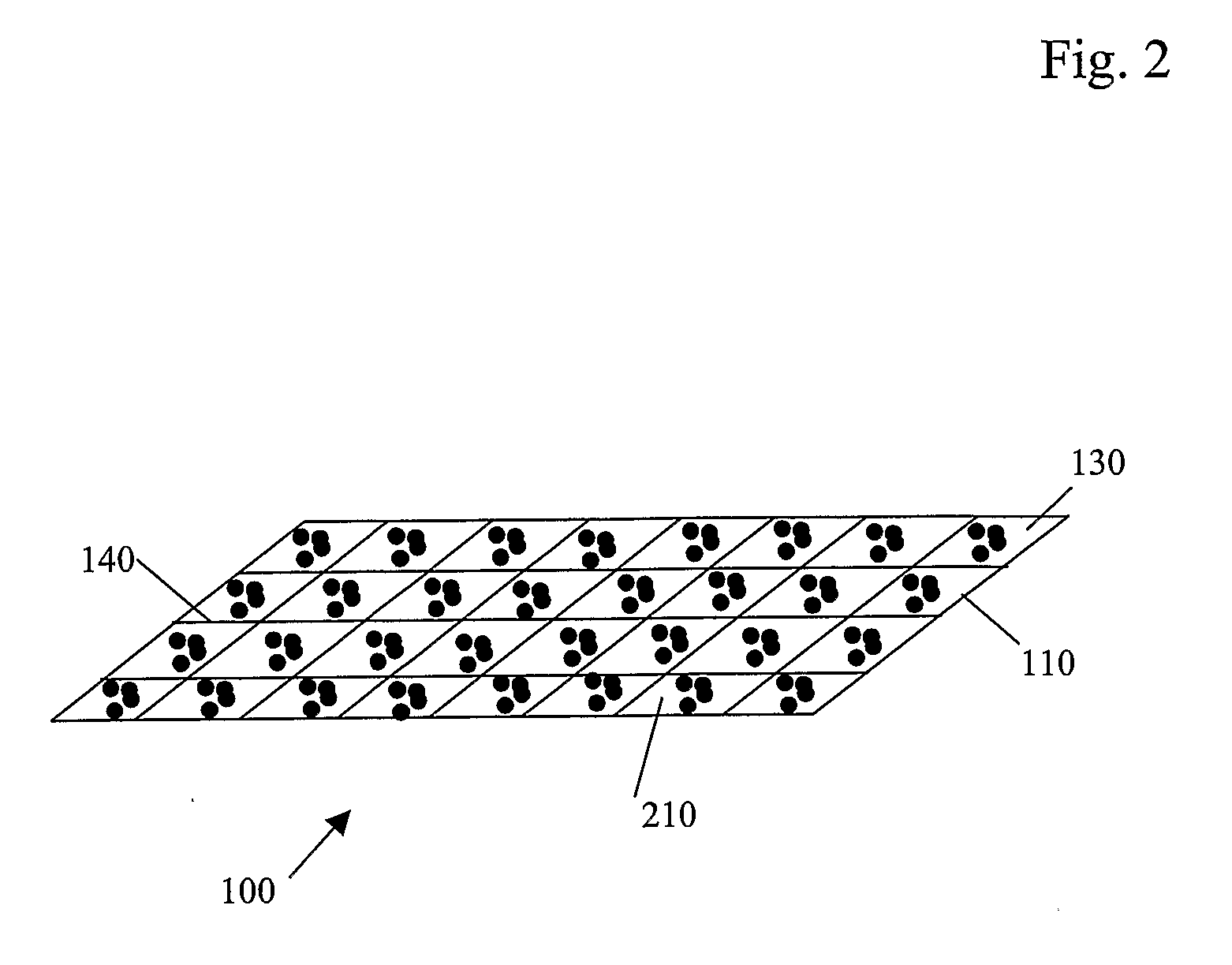Flexible glass fiber weave
a flexible glass fiber and weave technology, applied in weaving, other domestic articles, synthetic resin layered products, etc., can solve the problems of lack of aesthetic appeal and high cost of pvc coated fabrics relative to non-coated fabrics, and achieve the effect of flat surfa
- Summary
- Abstract
- Description
- Claims
- Application Information
AI Technical Summary
Benefits of technology
Problems solved by technology
Method used
Image
Examples
embodiment 100
[0025] It should be noted that the distance or spacing between adjacent yarns 140 may vary without affecting the manufacture or operation of the embodiment 100, except where specified otherwise. In some embodiments, the spacing between adjacent yarns 140 may deliberately vary, in order to create a desired appearance or function.
[0026] Generally, all yarns 140 in the present embodiment are flat in lateral cross section, rather than circular. Similarly, the yarns 140 are substantially uniform in longitudinal cross-section, no matter the distance from the edge at which the cross-section is taken. Further, the yarn thickness generally does not substantially vary along the yarn's length, and each yarn in the weave 100 has generally equal dimensions. For example, the overall thickness of each yarn 140 in the present embodiment 100 is preferably approximately 0.006 to 0.010 inches, although this thickness range may vary in alternative embodiments. Alternative embodiments may also employ ya...
embodiment 300
[0036] Some embodiments 300, such as shown in the exploded view of FIG. 3, may omit the adhesive layer 120 entirely. In such embodiments 300, the polymer sheet 130 is generally made of a thermoplastic or other material having a relatively low melting point, such as a polyester, polypropylene, or polyolefin. In these embodiments 300, the polymer sheet 130 generally melts during the manufacturing process and encapsulates individual yarns 140 in the fiberglass weave 110, as described above. As the polymer melts and encapsulates the yarns, capillary action draws the polymer into the interior of each gap between adjacent yarns, thus filling in all void spaces 210 defined by the yarns 140 as well. Because the glass fibers 140 have minimal thermal mass, the air inside each void space 210 is typically heated to a temperature higher than that of the surrounding yarns. Accordingly, the capillarity of the polymer is enhanced, drawing the polymer further into the void space and away from the ya...
embodiment 400
[0039] The fiberglass weave 410 may include a variety of other coatings applied to the yarns 412, such as a coloring. The yarns 412, for example, may be dyed, painted, or otherwise coated with any desired colors without affecting the manufacture or operation of the embodiment 400. Generally, such colors are added during the finishing bath applied to the weave 410. The thickness of the final weave 410, regardless of coloring, coating, and other treatments applied thereto, is generally between 0.006 and 0.010 inches.
[0040] Further, the weave or scrim's 410 woven pattern may be varied quite substantially. When selecting a scrim pattern, several factors may be considered. First, the capillary action of the weave may play a factor, to ensure the entirety of each yarn 412 is adequately coated and the void space 414 completely filled (if desired). If the yarns 412 are placed too far apart, for example, the polymer 130 may not fill the entirety of the void spaces 414.
[0041] Additionally, v...
PUM
| Property | Measurement | Unit |
|---|---|---|
| Flexibility | aaaaa | aaaaa |
| Melting point | aaaaa | aaaaa |
| Stability | aaaaa | aaaaa |
Abstract
Description
Claims
Application Information
 Login to View More
Login to View More - R&D
- Intellectual Property
- Life Sciences
- Materials
- Tech Scout
- Unparalleled Data Quality
- Higher Quality Content
- 60% Fewer Hallucinations
Browse by: Latest US Patents, China's latest patents, Technical Efficacy Thesaurus, Application Domain, Technology Topic, Popular Technical Reports.
© 2025 PatSnap. All rights reserved.Legal|Privacy policy|Modern Slavery Act Transparency Statement|Sitemap|About US| Contact US: help@patsnap.com



